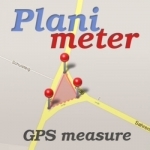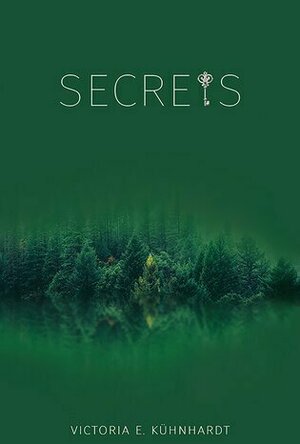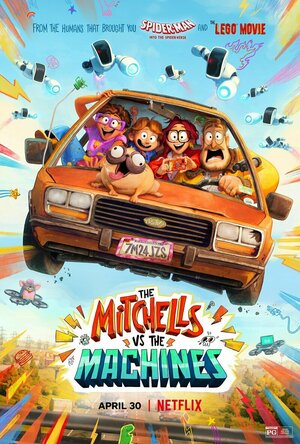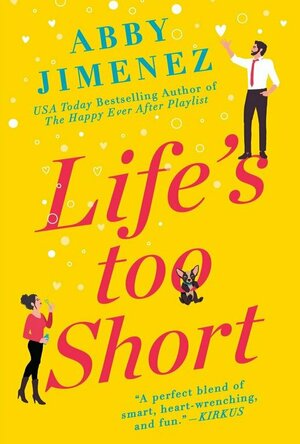Night Reader Reviews (683 KP) rated Secrets in Books
Nov 18, 2020
Posy Waiters’s is a fifteen year old girl who has always questioned her parent’s love for her. This is mainly because she hardly knows them since they travel all the time for work and rarely see her. Sometimes they even forget to send her a card on her birthday. Posy lives all alone except for the live-in nanny who is only there for the money Posy’s parents are paying her. One day all this suddenly changes.
Posy’s parents tragically die and leave Posy to their friends whom Posy has never even heard of let alone met. Her greedy nanny doesn't even stick around to help her pack after hearing the news. Now Posy is living in San Francisco with the Forests but things are not quite what she thinks. While exploring the cellar of her new home Posy discovers something that will change her life forever.
I just loved how many twists there were in this book, some of which actually surprised me. One of the biggest surprises actually appeared at the very end of the book and was a real shocker (though it left a bunch of questions I feel will go unanswered as I don’t believe there is a sequel coming). I also enjoyed the loyalty and non-judgmental attitude for the friends, a rare trait anymore. There are quite a few errors in the book but that is not my largest complaint. My main issue is just how oblivious Posy and Alex are frequently. I also felt like the author occasionally forgot how old (or young) the characters are, such as when a sixteen year old Posy buys a cocktail dress.
Teens to young adults would probably like this book the most. This is largely because it doesn't go into a lot of detail. I also don’t believe the unanswered questions will bother younger readers as much. However, incest is a big subject in this book (and sex is hinted at) and those unable to handle it should refrain from reading this book. I rate this book 2 out of 4 or 3 out of 5. The book would have been much better if it answered ore of the question that it created. That along with the errors and age appropriate behavior (or lack there of) of the characters really damaged my view of the book. If going off of the plot alone I would say the book is extremely good.
Emma @ The Movies (1786 KP) rated The Mitchells vs The Machines (2021) in Movies
Aug 11, 2021
Having seen the Connected trailer, as it was previously called, I knew I wanted to see it, and I was fairly certain I was going to enjoy it. It looked funny with some great characters and a nice bit of family drama thrown in. I don't think I was really prepared for how much I was going to enjoy it though.
In a last ditch attempt to spend time with his daughter before she heads off to college, Rick cancels her travel plans in favour of a family road trip. The tensions run high in the car, but that's nothing compared with the robopocalypse that's about to erupt around them... and if the pressure of family bonding wasn't enough, just wait until you're humanities last hope.
The idea behind The Mitchells vs the Machines is really quite nice. Being constantly connected to their devices has meant the divide between tech-phobic dad and digital creative daughter is growing by the day, and all she wants to do is get away. It does make you think about the way you interact with devices, and how reliant on them we've become... but we're not quite at the robot uprising so far... just keep an eye on Alexa.
The Mitchell family voice cast worked great together. I adore Maya Rudolph, and combined with just the right amount of dad from Danny McBride, they made a well balanced parental unit. And Katie (voiced by Abbi Jacobson, who also voices Bean in Disenchantment) was the perfect balance of stubborn teen and living sister.
Of course the obvious MVP of the film is Monchi the dog, voiced by Doug the pug. I will hear no arguments on this point... admittedly, mum does make a last minute surge for the top spot, but Monchi was consistent throughout.
Sony have managed to create a very amusing apocalyptic world. The robot army is great, and the personalities they display are so amusing, but even the other machines within the film have wonderful quirky little characters. The design in the world is magnificent, and well thought out, particularly when we get to the climax of the film.
I genuinely don't have a bad word to say about this film, it was action packed with something for everyone. There's speculation about a second film I believe, but I hope that doesn't develop into anything. Mitchells vs the Machines was a great standalone film, and there's no real follow up potential as it is. Take the win, pick up another idea and run with it.
Originally posted on: https://emmaatthemovies.blogspot.com/2021/08/the-mitchells-vs-machines-movie-review.html
Kristy H (1252 KP) rated Life's Too Short in Books
Jun 24, 2021
I loved the first two books in this loosely tied series. This was probably my least favorite of the three, but I still enjoyed it. Jimenez writes excellent slow burn romances, and this one was no exception. Plus, it offers excellent escapism while delving into serious subjects, which I always love about her work.
Adrian was my favorite here--dependable, sweet Adrian. Both characters have a lot baggage in this book, so be prepared. Beyond her genetic illness woes, there's a lot going on with Vanessa's family. Some of the way the book deals with mental illness is excellent; sometimes, I'm not so sure. And Adrian has his own issues with his family as well. As for Vanessa, her attitude and approach toward her potential genetic illness was a little hard for me to handle. It's one of those things where you just want to take the character and try to shake some sense into them. Yes, Jimenez provides some backstory and reasoning for Vanessa's attitude, but... this was the one part of the book that was hard for me to swallow. (And it was, um, key to the plot.)
If I overlooked that piece, Vanessa and Adrian were cute together. There's lots of the patented Jimenez banter, romance, and cuteness. Someone needs to learn to trust again, someone needs to come out of their shell. But, because it's Jimenez, it's done in this adorable, funny way tinged with a heartfelt touch. And this time there's a baby! (Who is amazingly portable and never causes any trouble--wish my kids were like that, ha.) The book can be heartbreaking at times. I honestly adored Adrian, his outlook on the world, and how supportive he was of Vanessa. We could all use an Adrian to take care of us.
If you like romances, you'll enjoy this one. It's cute and sweet, without being sickeningly so, and there are lots of moments that make you laugh. It's also serious in places, covering illness and family. It's not the best of the series, but it's worth a read. Just be prepared for some frustration with some of the characters! 3.5 stars, rounded up.

Planimeter - Field Area Measure on Map & GPS Track
Productivity and Utilities
App
Planimeter is a tool to measure land distances and areas on a map, to check bearing and...

Kokorozashi Daimoku
Lifestyle and Health & Fitness
App
Kokorozashi is the only daimoku counter you will ever need. View your recitations on the map and...

HRV4Training
Health & Fitness and Sports
App
The only scientifically validated HRV app that doesn't require an external sensor. HRV4Training...

Sky Girls: Flight Attendants
Games and Entertainment
App
> Get ready to be the best airplane flight attendant the sky has ever seen! > Keep the passengers...

widget weather - offline forecast, your own style
Weather and Reference
App
Even bad weather can be forecasted beautifully! widget weather will make any weather look good on...

Azul Media Player - Video player for your iPad
Travel and Utilities
App
••• ON SALE $4.99->$2.99 - The #1 Travel App of 2015 - As featured in Apple's "Staff...



